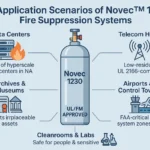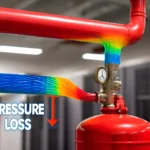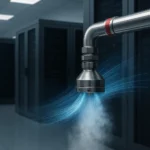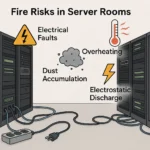When a fire ignites, how quickly and effectively a suppression system responds depends on its release method.
A Direct Release System (DLP) acts instantly—its detection tube ruptures at the heat source, releasing the extinguishing agent directly at the point of ignition. This method is ideal for small, enclosed spaces where fires need to be stopped immediately.
An Indirect Release System (ILP) detects the fire and releases the agent through a network of pipes and nozzles, ensuring wider coverage in larger spaces.
Understanding the differences between DLP and ILP is key to selecting the right system. This guide breaks down their mechanisms, technical performance, NFPA compliance, and best-use scenarios to help you make an informed choice.
Fire Suppression Release Methods
To understand the fundamental difference between Direct Release (DLP) and Indirect Release (ILP) Fire Suppression Systems, think of them as a precision sniper vs. an aerial firefighting aircraft:
- DLP (Direct Release) is like a sniper taking out a fire at a single, precise point. The extinguishing agent is released directly at the source of heat, ensuring rapid suppression in compact enclosures (e.g., electrical cabinets, machinery compartments).
- ILP (Indirect Release) is like an aerial firefighting plane, dropping fire retardant over a large area. The agent is transported through a network of pipes and nozzles, ensuring even coverage in environments such as data centers, warehouses, and industrial facilities.
| Feature | Direct Release (DLP) – “Sniper Shot” | Indirect Release (ILP) – “Aerial Drop” |
| Activation Mechanism | Heat-sensitive detection tube ruptures at 175°C (347°F) | Sensors detect fire & trigger suppression system |
| Discharge Mechanism | Agent is released at the rupture point | Agent is released through a piping system & multiple nozzles |
| Reaction Time | Instantaneous (<5 sec) | ≤10 sec per NFPA 2001 standards |
| Best for | Small enclosures (≤2 m³ or 70 ft³) | Large spaces (>2 m³ or 70 ft³) |
| Installation Complexity | Minimal – only detection tubing | High – requires piping & nozzles |
Direct Release Fire Suppression System (DLP)
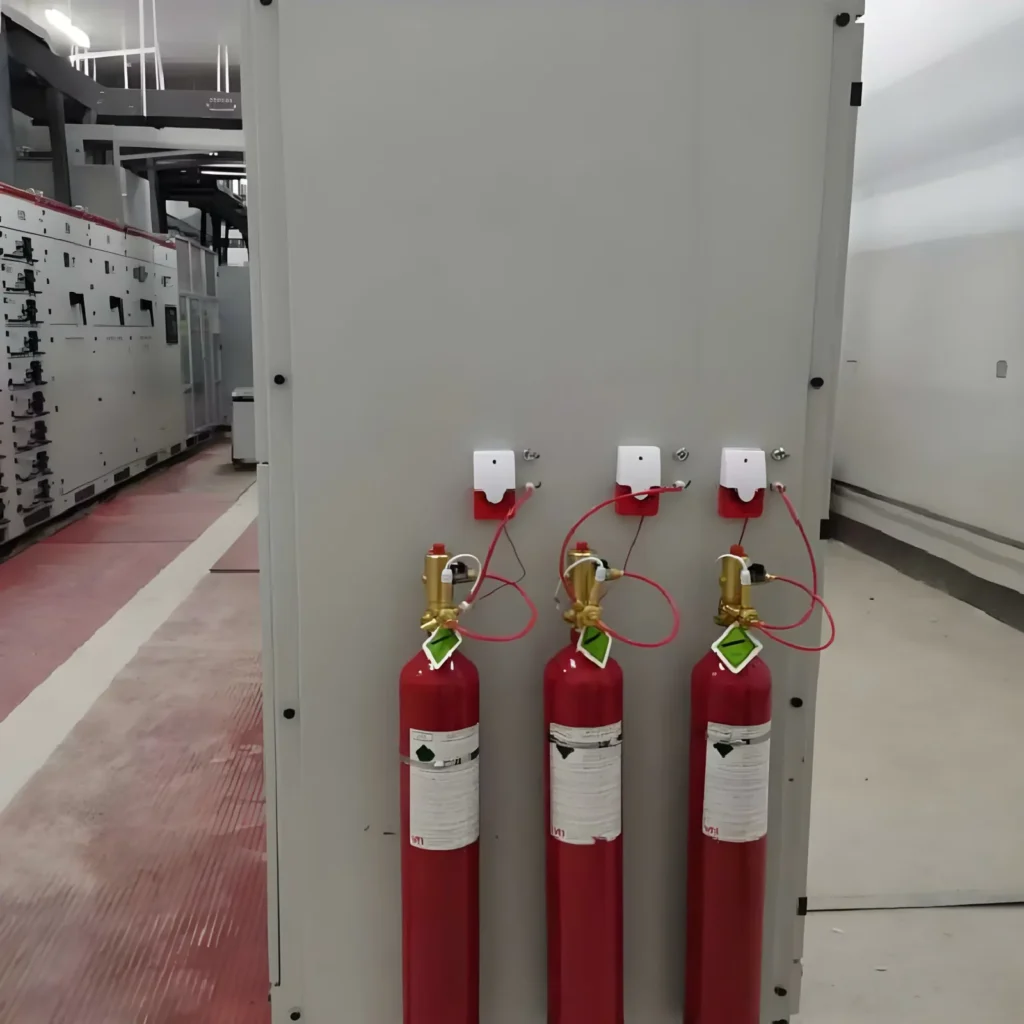
A Direct Release Fire Suppression System (DLP) integrates linear pneumatic detection tubing as both the fire detector and the discharge mechanism.
Technical Process
- Fire detection: The linear pneumatic detection tube (rated for 110°C–180°C (230°F–356°F)) is positioned near potential fire hazards.
- Activation: When a fire occurs, the tube ruptures at ~175°C (347°F) and a calibrated pressure of 8–18 bar (116–261 psi), triggering the suppression system.
- Agent discharge: The extinguishing agent is expelled directly at the rupture point, suffocating the fire within milliseconds.
Applications
- Electrical cabinets
- CNC machines
- Engine compartments
- ATMs & kiosks
Indirect Release Fire Suppression System (ILP)
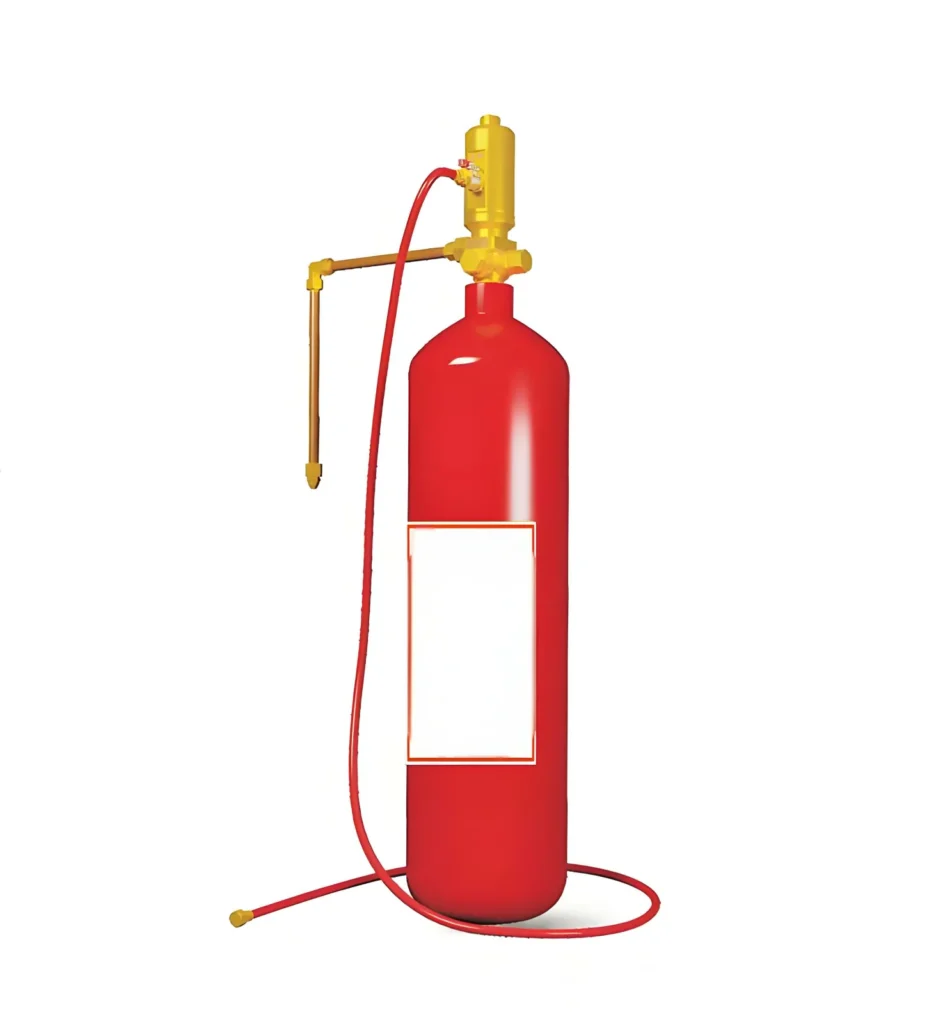
An Indirect Release Fire Suppression System (ILP) utilizes a separate fire detection mechanism (thermal sensors, smoke detectors, or pneumatic tubing) to trigger agent release through a pre-engineered piping system.
Technical Process
- Fire detection: Sensors detect fire and activate a solenoid valve or pressure-actuated release system.
- Agent distribution: The system releases the extinguishing agent through a network of pipes and nozzles.
- Total flooding protection: The agent disperses to meet NFPA total flooding concentration standards within ≤10 seconds.
Applications
- Data centers & server rooms
- Industrial manufacturing plants
- Aircraft hangars & fuel storage facilities
- Transformer substations
DLP vs. ILP Fire Suppression Systems
| Criteria | Direct Release (DLP) | Indirect Release (ILP) |
| Activation Mechanism | Tube rupture at 175°C (347°F) | Sensor-based valve actuation |
| Discharge Time | <5 sec | ≤10 sec |
| Agent Storage | 1–5 kg per cylinder | 10–200 kg per system |
| NFPA Standard Compliance | NFPA 2001, NFPA 17 | NFPA 12, NFPA 16, NFPA 750 |
| Installation Cost | $500–$2,500 | $5,000–$50,000 |
How to Choose the Right Fire Suppression System?
Step-by-Step Decision Guide
1️⃣ Assess Protected Area Volume:
- If your enclosure is ≤2 m³ (70 ft³) → DLP is ideal.
- If your space is >2 m³ (70 ft³) → ILP is required for full coverage.
2️⃣ Identify the Fire Hazard:
- Localized electrical fires (e.g., control panels, ATMs, CNC machines)? → Use DLP (FM-200, Novec 1230, CO₂).
- Industrial, flammable liquids, or warehouse storage? → ILP (Foam, CO₂, or Water Mist) is the best choice.
3️⃣ Analyze Agent Discharge Efficiency:
- DLP: Discharge rate 0.5–2.0 kg/sec, instant fire suppression at ignition point.
- ILP: Total flooding with 5–200 kg agent storage, ensuring large-scale protection.
4️⃣ Consider Installation & Cost Constraints:
- DLP is cost-effective ($500–$2,500 per unit), requiring minimal installation.
- ILP is higher-cost ($5,000–$50,000), requiring professional engineering and compliance with NFPA installation codes.
Fire suppression technology is rapidly evolving, integrating smart sensors, IoT-enabled monitoring, and AI-based fire risk analysis. The choice between DLP and ILP is no longer just about immediate vs. large-scale suppression, but how systems integrate with modern fire prevention strategies.
For site-specific recommendations, consult an NFPA-certified Fire Protection Engineer (CFPS) or refer to the latest NFPA standards (12, 17, 2001, 750, 16).

